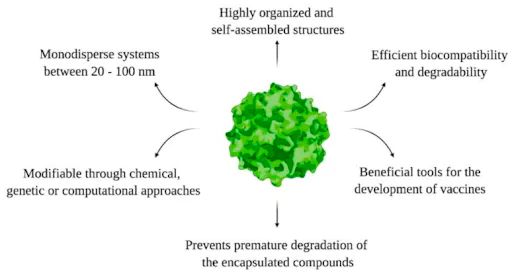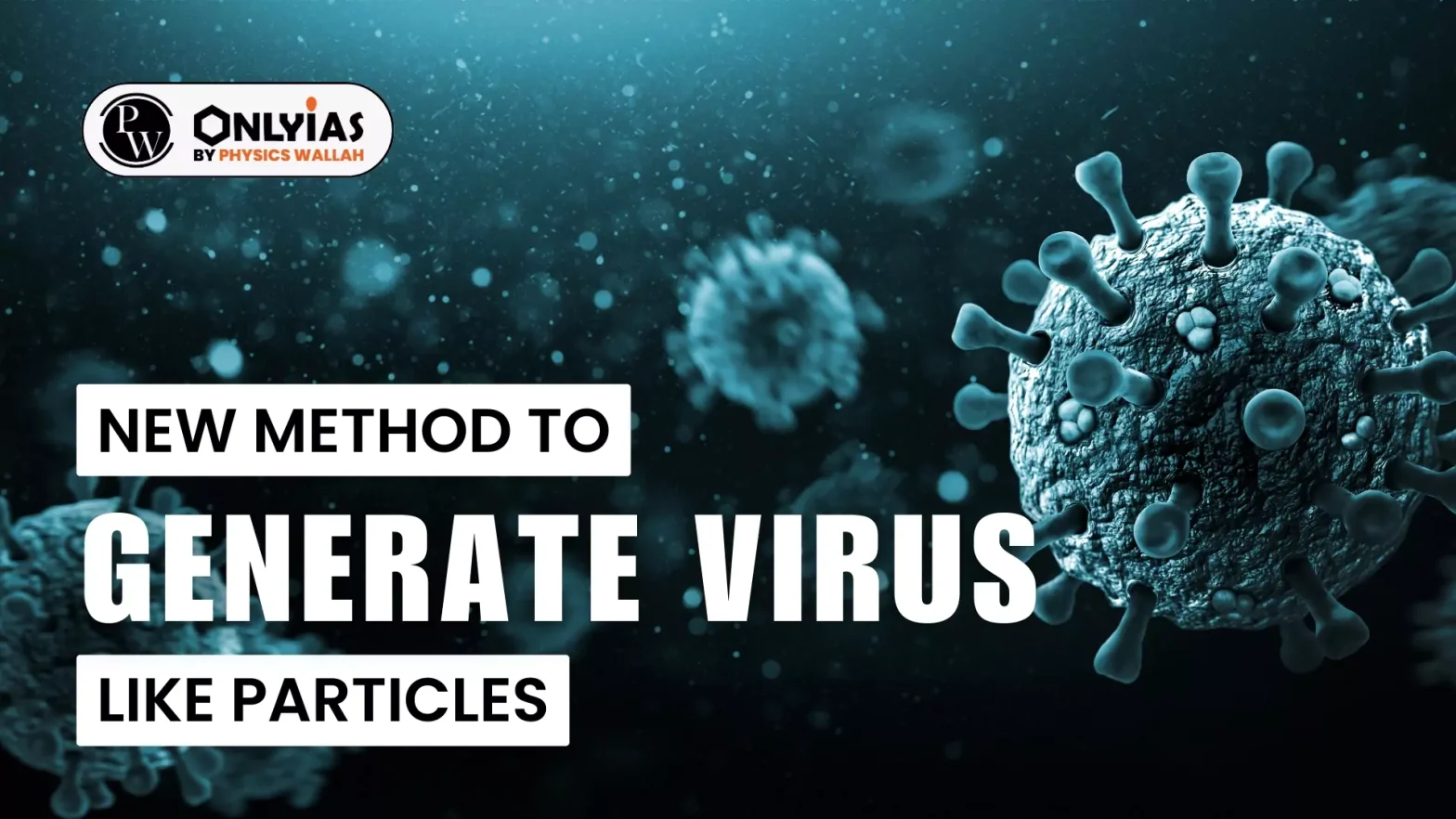Recently, scientists at the Institute of Advanced Virology (IAV), Thonnakkal, Thiruvananthapuram, Kerala, have developed a novel way of generating non-infectious Nipah virus-like particles (VLPs) in the laboratory, which mimic the wild type Nipah virus (NiV).
Scientists Develop HiBiT-Tagged Non-Infectious Nipah Virus-Like Particles for Antiviral Screening and Vaccine Development
- In the current study, IAV scientists generated “HiBiT-tagged” Nipah virus-like particles (NiV-VLPs) using plasmid-based expression systems, encoding the NiV structural proteins glycoprotein (G), fusion protein (F), and matrix (M).
- The VLPs thus produced were morphologically and functionally identical to the native virus. The inclusion of a highly sensitive HiBiT tag on these VLPs accelerates their potential in antiviral drug screening and vaccine development.
Enroll now for UPSC Online Course
About Nipah Virus

- A Pathogenic Virus: The zoonotic virus Nipah is a highly pathogenic paramyxovirus, with a fatality rate of up to 80% in affected humans.
- It is one of the deadliest pathogens known to infect humans.
- Zoonotic disease means it passes from animals to humans.
- Nipah virus can be spread to people from infected bats, infected pigs, or infected people.
- Host: The natural hosts of the virus are fruit bats, also known as flying foxes.
- Genome: The genome of the NiV encodes six major proteins: glycoprotein (G), fusion protein (F), matrix (M), nucleocapsid (N), long polymerase (L) and phosphoprotein (P).
Check Out UPSC Modules From PW Store
About Virus-like Particles (VLPs)

- Non-infectious Particles: Virus-like particles (VLPs) are molecules that closely resemble viruses, but are non-infectious because they contain no viral genetic material.
- Particles’ Characteristics: VLPs carry most of the characteristics of the virus, except their ability to replicate (because it lacks the viral genome).
- Structure Classification: Given the structural diversity of VLPs, they have been categorized into three main groups: enveloped, nonenveloped, and chimeric.
- Enveloped VLPs (eVLPs): These are complex structures that own a host–cell-derived membrane and one or more glycoproteins.
- As vaccines, eVLPs stimulate immune responses and are manipulated with chemical or genetic methods.
- Non-enveloped VLPs: Non-eVLPs are single or multiple capsid protein nanoconstructs that lack cell membranes. Members of this category are produced on eukaryotic or prokaryotic expression systems.
- The surfaces of non-eVLPs can also be manipulated with chemical and genetic approaches to display epitopes or peptides on their surfaces and, herein, elicit wider immunological responses.
- Chimeric VLPs (cVLPs): These are nanoplatforms from structural components originating from at least two different viral serotypes.
- In these nanoplatforms, the VLP core can be modified with antigens that cannot self-assemble or present polyproteins from distinct viruses.
- In contrast with the other two categories of VLPs, cVLPs are useful to present foreign epitopes; entrap multiple therapeutic or diagnostic molecules; and target cells, tissues, or organs.
- Importance: VLPs have long been recognised as effective quantitative platforms for studying viral binding and entry kinetics of the virus. But the advent of NanoBiT technology and “HiBiT-tagged” VLP (HiBiT is an 11 amino acid peptide ) makes it far more sophisticated.
- Virus neutralization assays are critical for the development and evaluation of vaccines and immunotherapeutics, as well as for conducting basic research into the immune response and pathogenesis of NiV.
- These tests, which traditionally require to be done in high security labs with the infectious organism, can now be done safely in BSL-2 labs in the country using the NiV-VLPs.
|
Significance of New Method to Generate Virus-Like Particles
- Safe & Effective Platform: This new method offers an alternate, safe and effective platform for developing neutralizing antibodies against NiV in a biosafety level-2 (BSL) laboratory.
- Biosafety Level-2 (BSL) Laboratory: This biosafety level covers laboratories that work with agents associated with human diseases (i.e. pathogenic or infectious organisms) that pose a moderate health hazard.
- Reduced Risks: The potential risks of using native viruses in virus-host interaction assays, immune response studies, immunoglobulin validations and other virus-based assays could be alleviated with the use of these HiBiT tagged VLPs.
- Enable Studies in Lower Biocontainment Levels: The concept of generating VLPs or tagged VLPs (eg: HiBiT) is applicable to several other virulent pathogens but it is particularly advantageous to apply this methodology to BSL-3/BSL-4 level viruses, to enable studies in lower bio-containment levels.
Enroll now for UPSC Online Classes
![]() 3 Jun 2024
3 Jun 2024



